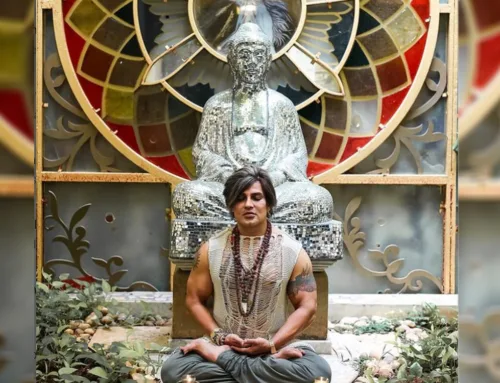The Sanskrit word dharma, which roughly translates to “righteous living,” actually has a much deeper meaning than what can be inferred from its English translation. The Vedas, the earliest Hindu literature, define Dharma as an inner wisdom or cosmic guidance that rules not only the individual but also the cosmos as a whole.
Yash Birla believes that a person only needs to follow that inner instruction in order to live out their Dharma. Simple, right? No, never.
There are so many voices clamouring for your attention that you can find it challenging to listen to that inner voice. Let us look at the 5 things to know about dharma.
Dharma has no single-word English translation
Early Vedic literature explains dharma as the laws that offer order to a universe that would otherwise be in disorder. The word “dharma” is derived from the Sanskrit root “dhri,” which means “to hold, support, or maintain.”
The practices of dharma are those that are most effective in preserving family and society, both of which would otherwise collapse, according to sacred texts and stories. Therefore, it should not come as a surprise that many scholars have attempted to translate dharma into one word in English, using concepts like “law,” “duty,” “custom,” and “model,” all of which ultimately help to maintain or hold together the structure of an organised system.
It is difficult to tell when someone is acting in accordance with dharma and when they are not because laws, duties, and conventions vary from person to person, culture to culture, location to location, and time period to time period.
Determining the “right” or “proper” activities a person should take at any given time is difficult because each person is unique and has various inclinations and obligations.
Dharma is one of the four goals of life
The Vedas state that the pursuit of right conduct (dharma), material security (artha), material enjoyment (kama), and spiritual liberation (moksha) are generally necessary on the way to a balanced and meaningful existence. Even while they are intended to work harmoniously together to provide a web of support for the path of emancipation, the first three can also be seen as being more linear. The appropriate actions can lead to financial success, which opens the door to material luxuries.
People are better able to cultivate the calmness needed to concentrate on pursuing their spiritual practises and growth when they are materially content.
Dharma, which implies that there is a correct way for everyone to live in order to best serve themselves and those around them, is hence the fundamental basis from which all other aims are achieved. As a result, dharma is frequently referred to as the law of righteousness since it offers prescriptions for morality, conduct, and customs designed to help people become their best selves.
But what makes something dharmic?
Since dharma doesn’t have a single meaning that stands regardless of context, how can you judge if a practice is truly dharmic? How can people achieve their full potential in the most effective way?
Understanding a thing’s nature will help you find the answers to these questions. Nature appears as necessary and irreplaceable properties or attributes in the structure of a specific object. An object’s dharma, which is defined as its purpose, is determined by these characteristics. For instance, fire’s nature is to burn while also emitting heat and light. As a result, fire’s dharma is to give off heat, light, and the power to burn.
There are two types of living things’ dharma: spiritual and material
While everyone has an innately spiritual nature that makes them everlasting, they are also all housed in transient material bodies that allow them to express their individual physical and mental selves. When we embrace and nourish our innately good tendencies and use them to inspire ourselves and others, creating an atmosphere where everyone can freely pursue their spiritual aspirations, we grow into our best selves. This means having compassion, honesty, self-control, generosity, patience, contentment, and empathy, among many other virtues exemplified in sacred texts and stories. It also includes thinking, speaking, and acting in these ways. Such a procedure offers direction while also giving individuals the freedom to explore spirituality in a way that suits their personalities and preferences.
Therefore, Yash Birla explains that the ultimate definition of dharma is the behaviour that is most suited to spiritual development.
Time, place, and circumstance matter
Since dharma is the style of conduct that is most beneficial to spiritual advancement, rules of ethics and principles, such as “patience” or “truthfulness,” are only considered dharmic to the extent that they promote spiritually uplifting endeavours.
Such ideals may really turn into adharmic, or harmful, deeds if they are ever in the way of such endeavours.
Krishna tells Arjuna a story in the Indian epic the Mahabharata about a saint who pledged never to tell a lie. This is a good illustration of a classic dharmic ideal being used adharmically.
A group of uninvolved individuals stopped by the man’s ashram one day to hide from a bunch of pursuing robbers. However, soon after hiding, the bandits showed up there and questioned the saint about the location of the innocent people. He pointed to where the gang was hiding because he was determined to follow his word; however, the bandits slaughtered them and took everything they had.
Krishna emphasises that the lesson of the tale is that moral principles shouldn’t be adhered to mindlessly. When adopting the principles of religion, one must be contemplative and use cautious discernment because the intricacies of dharma are frequently challenging to understand.
There are different types of dharma
If making spiritual advancement is the ultimate purpose of life, then each person acting in accordance with dharma has a duty to contribute to the creation of tranquil, effective societies that promote spiritual aspiration. Good families are led by persons of strong moral character who have grown into their best selves by using their gifts for the good of others. Successful families are the cornerstone of successful societies.
Suppose there’s a man who is a doctor. In addition, he is a father, a son, and a husband. He faithfully carries out the specific responsibilities of each role, such as assisting his children with their homework, reconciling the family’s bank account with his wife, driving his parents to doctor visits, and rushing to the hospital when his job requires it. Depending on the circumstance, sometimes one responsibility supersedes another or causes conflicts. For example, if he and his wife decide to stay home to care for a sick child rather than go visit his parents, they are choosing to serve a larger need and greater good.
Unlike basic objects or elements, which have purposes that are generally very easily defined, humans are complex beings who usually find themselves having to fulfil a medley of roles in relation to spirituality, community, family, and the self. As complicated as this might seem at times, it’s important to always remember that creating a peaceful world in which all can easily pursue spirituality begins with one’s own spiritual practice. Connecting to the Divine helps give one the instinct to perform actions that are inherently dharmic, Yash Birla adheres to this belief.
In other words, regular spiritual disciplines help all other aspects of life to naturally fall into place, believes Yash Birla.
In conclusion, Dharma is the duty of an individual to live a life of virtues and do good deeds. These 5 things to know about Dharma give a detailed explanation of this ancient Hindu belief system.






[…] Let us look at the 5 things to know about dharma. […]